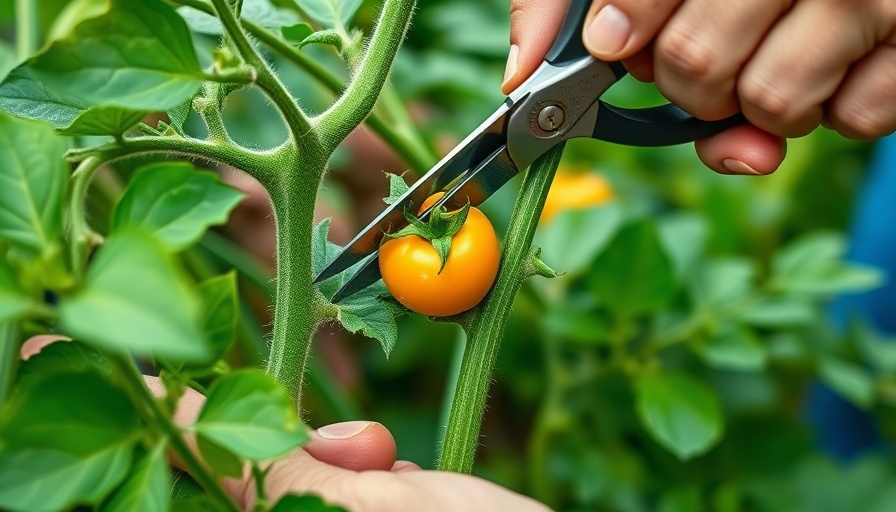
The Fine Line: Should You Prune Your Tomato Suckers?
As gardeners, we often find ourselves at a crossroads, especially when it comes to one of our favorite fruits—tomatoes. In the recent video titled This 1 Cut Can Save—or Sabotage—Your Tomatoes, we dive into the world of tomato suckers, examining the practical benefits and drawbacks of pruning them. But what’s the real takeaway for those of us cultivating tomatoes in Okanagan's unique climate?
In This 1 Cut Can Save—or Sabotage—Your Tomatoes, the discussion dives into the complexities of pruning tomato suckers, exploring key insights that sparked deeper analysis on our end.
Understanding Tomato Suckers
The term "sucker" may provoke laughter among the inexperienced, yet understanding this term is vital in the gardening community. These small stems sprout in the notch between the tomato plant’s main stem and its leaves. Ignoring them can lead to an overgrown plant that produces fewer and smaller fruits. The question remains: does pruning these suckers really help, or could it hinder your harvest?
The Benefits of Pruning
According to recent studies, including a 2023 analysis by the University of Maryland, pruning suckers can significantly accelerate fruit ripening by 10 to 14 days. In a colder climate like ours in the Okanagan, this bump in ripening time could mean the difference between enjoying fresh tomatoes and facing the first frost empty-handed. Pruning also enhances airflow between branches, immensely reducing the risk of disease.
Weighing the Costs
On the flip side, pruning has its costs. By removing suckers, you may sacrifice volume—yielding fewer, yet larger tomatoes. If you aren't keen on canning or making chunky sauces, this trade-off may not align with your gardening goals. Interestingly, heirloom varieties are distinct. Research suggests that removing suckers from heirloom tomatoes could dramatically impact fruit yield. Thus, the choice to prune may take an especially nuanced approach for heirloom gardeners.
Don’t Forget About Sun Leaves
Another integral part of the tomato plant makeup is the sun leaves, which surprisingly do much more than add greenery. They protect against sun scalding—both to themselves and the fruit. Keeping these leaves intact ensures that your tomatoes receive optimal growth conditions by minimizing heat exposure. However, if sun leaves start to crowd or touch nearby branches, it might be wise to prune them back selectively.
The Critical Timing for Cold-Climate Gardeners
Timing your pruning strategy is crucial, especially if you garden in colder climates. Approximately 2-3 weeks before the first frost date—around mid-August in the Okanagan—it’s beneficial to top your plant. This practice diverts energy from the growing tip to seed production, further ensuring a successful harvest ahead of the cold. Topping your tomato plants gives them a fighting chance as the season winds down.
A Perennial Question: How Do You Approach Pruning?
Ultimately, the decision to prune tomato suckers boils down to your personal gardening philosophy and intended outcomes. Will you prioritize larger, high-quality tomatoes or opt for a higher volume small-sized harvest? Each choice shapes not just your gardening experience, but the culinary adventures that follow after harvest. The conversation around pruning leaves room for diverse gardening perspectives, all knit together by shared knowledge and experiences.
Why Your Gardening Decisions Matter
For Okanagan gardeners, pruning is more than a mere technique; it reflects the relationship we nurture with our plants. Whether through experimentation or tradition, each choice helps us better understand our gardens. So what’s stopping you from joining this intriguing conversation? Share your thoughts or practices around tomato pruning. The journey of gardening is enriched through shared insights; your experience could be the nugget of wisdom someone else needs!
 Add Row
Add Row  Add
Add 




Write A Comment